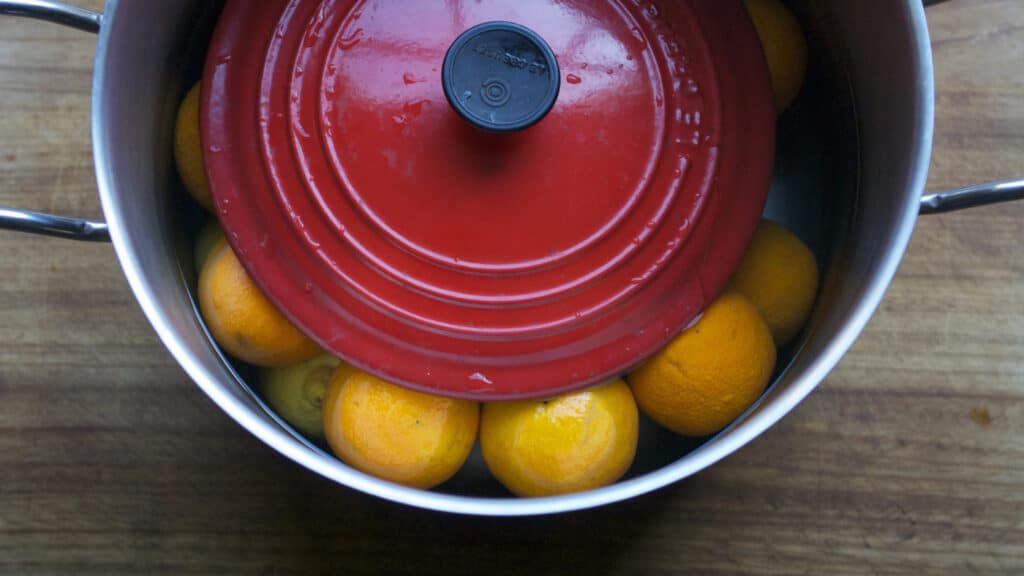Lady marmalade
Jenny Chandler shares her experiences of making marmalade for the first time and offers tips to encourage nervous novices to get bottling while these tart oranges are still available


“I’VE NO MYSTICAL TIPS OR TRICKS PICKED UP FROM A ROSY-CHEEKED GRANNY AS SHE SKIMMED THE PRESERVING PAN”
I don’t hail from a long-line of marmalade makers so I’ve no mystical tips or tricks picked up from a rosy-cheeked granny as she skimmed the preserving pan. In fact, I’ve always felt slightly nervous about the whole business of jams, curds and preserves. I was a marmalade virgin until relatively recently – then I read a no-nonsense recipe by wine and food writer Fiona Beckett and I gave it a go. I was so amazed by how straightforward and rewarding the whole process was that I made another two batches. My marmalade is simply fabulous; it’s dark, it’s chunky and perfectly bittersweet.
To start, you’ll need some Seville oranges. These bitter but beautifully fragrant fruits are only available for a couple of months, imported from Spain from December through to about mid-February. Available from Borough Market’s greengrocers, they’re good for cooking with, in marinades, cakes and pickles, but their most famous use is in marmalade.
Opinions are divided when it comes to marmalade methods, in fact it’s almost better not to ask for advice since everyone will have the ‘very best’ recipe. Purists seem to swear by slicing the fruit and leaving it to soak overnight, which apparently gives a more delicate, crystal-clear result than the quicker, boil-the-fruit-whole approach. I went for the latter and though I may not walk off with the WI trophy, my marmalade certainly knocks the socks off anything I’ve bought in the supermarket.
Experienced jam makers can jump the list of handy hints below, but as a novice I needed to go back to basics, and you may too.
The basics
— Unless you already own a preserving pan, or are planning on opening a B&B, I’d just stick to making the marmalade in a heavy stock pot or better still, if you happen to have one, the base of a pressure cooker.
— You need a piece of muslin in which to tie up the pips and pulp (they are rich in pectin, which sets the jam). No muslin? Well (and I know that this sounds rather unappetising but it’s very convenient!) a NEW pop sock will do nicely, just give it a rinse before using.
— A couple of plates in your freezer or fridge will help you when testing the ‘set’ of your marmalade.
— To sterilise jars you can place them in an oven at 130C for half an hour, or wash with cold water and zap, whilst damp, for 40 seconds in the microwave. The jars must be hot when you pour the hot marmalade into them, otherwise they could shatter.
— If your lids do not fit tightly then use a cellophane cover. A seal is important – otherwise your precious marmalade could go mouldy. It’s advisable to cover the surface of the marmalade with a disc of waxed paper too, if you are keeping the marmalade for any length of time.
— A jam funnel is a blessing, enabling you to ladle in the marmalade quickly and saving on time wiping sticky jars later. Otherwise just use a jug, but go carefully.
Read Jenny’s recipe for Seville orange marmalade
